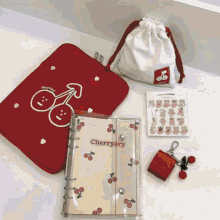With the rise of environmentalist movements and the awareness of the ethical issues of clothing corporations, more and more people are drawn to thrifting or secondhand shopping as a better alternative. But as we witness the growing popularity of thrifting, we must reconsider this practice which we once deemed as more ethical.
Let us slide into your dms 🥰
Get notified of top trending articles like this one every week! (we won't spam you)What is Thrifting and Why is it Popular?
Thrifting is the process of purchasing from thrift stores. Thrift stores are places where used items, primarily clothing, but also books and albums are donated by people who have used them for a long time before that. These items are then sold to people to purchase second-hand, for an affordable price of no more than a few dollars.
This is an alternative to directly buying first-hand from manufacturers. Typically, these items are purchased by low-income communities that depend on cheap items.
Recently, however, it has become a trendy activity among many teenagers and young adults. In recent years, the internet has exposed many of the social issues and injustices in the world we live in, including the unethical actions of many clothing companies. Many fast fashion brands do not pay their workers a fair wage and force them to work in dangerous conditions. Many have also become aware of the negative impacts that fast-fashion companies have on climate change.
Gen-Z is the generation that grew up with the internet and those will have to face the environmental consequences of these unethical practices in the future. Therefore, young people of today desire to find ways to be more ethical in their everyday actions. Purchasing second-hand items is one of the ways to accomplish that. By buying clothes second-hand, one extends the life of the garment and avoids using extra resources, thereby slowing down the fashion cycle and reducing the demand for fast fashion.
Another factor that has contributed to the popularity of thrifting is the emergence of reselling apps, one of which is Depop. Founded in 2011 as an e-commerce marketplace for people to purchase and resell clothing items, it has quickly risen to become one of the most popular thrifting platforms. Other reselling platforms include Poshmark, Thredup, and Vinted. Before these apps existed, people could only visit their local thrift stores if there were any nearby and only had a small selection of clothes to choose from. With these apps, many more people can buy a much wider range of items. These apps have made second-hand shopping much more accessible and convenient for everyone.
The Gentrification of Thrifting
So, what exactly is the problem? Many factors contribute to the problem, but the source of it is that, these days, people thrift not because they need cheap clothing, but because they want to be more ethical and sustainable. When more people have the desire to shop second-hand, especially online, many of whom are relatively wealthy, the prices of clothing will naturally increase. In online thrift stores such as Depop, it is no longer surprising to see a simple tank top being sold for 30 dollars or a pair of jeans for 60 dollars.
With this in mind, certain individuals who aim to make a profit will exploit this mindset of consumers by buying from fast-fashion brands such as brandy Melville, h&m, and Walmart, increasing the price of these items, and selling them on platforms like Depop. People who love those brands but do not want to support them for ethical reasons will choose to purchase those items from online thrift stores for a much higher price than they were originally sold, since they are “second-hand” items.
They are unaware that these items are only branded as “second-hand items” as a sales tactic, and that they have barely been worn at all.
The same happens in physical thrift stores as well. When the items in thrift shops become unaffordable, low-income communities will no longer be able to participate in thrifting and have to instead return to fast fashion and buy cheap and low-quality clothes. This process is known as gentrification, and in this case, not only does it harm low-income communities, it also speeds up the fashion cycle again and benefits fast-fashion brands.
Take the Quiz: Which Indian city is the perfect holiday spot for you!?
Let's match you with an Indian city that you would love!
Influencers
Influencers also play a crucial role in the problems with thrifting. Internet influencers are notorious for overconsuming clothing because they are usually wealthy and receive sponsorships from clothing companies. Many influencers in the past few years have also hopped on the thrifting trend, which was another factor that contributed to its popularity.
Wealthy influencers would do massive thrift hauls on YouTube, Instagram, and TikTok. Many of them would also get sponsorships from online thrift stores such as Thredup to let them choose an overly large selection of clothes from their website.
Young viewers would then be “influenced” by them, thinking that it is normal to purchase this many clothes from thrift stores and do the same. This encourages overconsumption and takes away from the purpose of thrifting, which is to promote slow and ethical fashion.
Taking Away From Those in Need
Now that thrifting has become a popular activity, people sometimes forget that many people, primarily those with low incomes, actually depend on thrift stores for a living. However, with fashion trends, teenage girls and young adults would often take plus-size clothing for the “oversized” aesthetic or even shop from the kids' section because of the “y2k” and cropped shirt trend. This takes clothing away from people who need it, causing them to be even more marginalized in our society.
Essentially, what we are seeing is that fast fashion and consumerism have taken a new form. Instead of actually shopping more consciously, people are simply overconsuming clothing in thrift stores. We must remember that thrifting is sustainable and ethical only if done properly. Next time you go second-hand shopping, remember to look for high-quality items and only buy what is necessary and could be worn or used for many years afterward.













